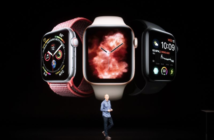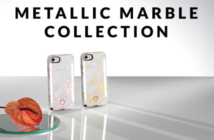
The most dramatic change is the new display surround, black glass that goes right out to the edge of the upper case just like on an iPhone. The lower case also looks significantly cleaner now that the old gray plastic edging is gone. I never liked this edging on my MacBook Pro. It looks and feels like what it is: a compromise forced on Apple by the inherent difficulty of making bare metal edges meet cleanly.
Apple dealt with this problem on the new machines by relocating the case seams to the underside of the machine, where they’re less visible–and where they can serve a more useful purpose, that of simplifying access to the battery, hard disk, and RAM. I’m especially sensitive to the whole hard-disk thing on the old machines, having upgraded my hard disk twice in two years.
The new case is what Apple calls a “unibody” design, recalling the term used in the automotive industry to describe a car chassis made by welding together many sheet-steel pieces… but in fact, Apple’s new manufacturing is much more unitary than that. The lower chassis of all the new machines (as well as the original MacBook Air) is made by milling down a solid block of aluminum to the exact shape needed.
This approach makes for an exceptionally strong, stiff chassis. Milling (also known as stock removal) is more expensive than some other methods, but it provides almost unlimited design freedom. It’s the same method we’d use if we were building low-volume, high-value custom notebooks; for Apple to be using it on high-volume system expresses a strong commitment to product quality. (The only method that would produce an even stronger chassis is net-shape forging, in which the metal is formed under high pressure to the exact shape required… but that approach would also be more expensive, and it imposes significant design constraints.)
We also really like the new trackpad. It’s huge, and it supports more multi-finger gestures than a New York cabbie. My MacBook Pro uses two-finger dragging to scroll within the window under the cursor, and really, I think this was one of the greatest improvements in general usability in years. More gesture recognition should be even better. With any luck, Apple will support both one- and two-finger clicking for left- and right-clicking…
Apple’s decision to use NVIDIA chipsets is especially significant on the MacBook models, because the Intel chipsets usually used in midrange systems have really weak graphics. Mac OS X and many Mac applications rely on good 3D acceleration. NVIDIA has it, Intel doesn’t. On the MacBook Pro models, Apple would have included a good discrete graphics chip no matter who made the chipset, but the fact that both come from NVIDIA made it easier for Apple to support switching between integrated and discrete graphics depending on whether the user needs battery life or 3D performance at the moment.
There are some things we’re not so sure about on these new systems. We generally prefer a matte-finish display, but there’s no longer any alternative to a glossy, glassy screen. Apple says reflections are less of a problem with a high-brightness LCD such as these machines are equipped with, but I’d have to live with one for a while to believe that.
I’m also not sure if the crisp new aluminum edge around the keyboard and palm rests is entirely a good thing. It doesn’t look any sharper than the edge on the plastic around my own machine, but the plastic has a glass-smooth and, more importantly, low-friction surface. This is another thing I’ll have to try for a while before I can make up my mind.
Is this really the right time to shift all of Apple’s portables to the new DisplayPort standard? Apple’s new 24″ Cinema Display with DisplayPort and a built-in MagSafe power supply is a very cool product, but most of the displays in the world use analog RGB (over a VGA cable) or DVI.
Apple used to throw in a free DVI-to-VGA adapter, but the new MacBooks require extra-cost adapters– three different ones!– for the same functionality, and some of these dongles are active electronic devices. It looks like one of these even needs to draw additional power from a USB port!
The battery-level indicator is now built into the side of the machine itself, rather than being part of the battery. This puts the indicator where it’s easier to see when a battery is installed, which is good… but I wonder if there’s another indicator on the battery itself, since it’s even more important to know the condition of a battery when it isn’t installed.
A few things that aren’t quite so awesome:
There’s no new 17″ model, just a lightly updated version of the old 17″ model. (If you really must have a matte-finish LCD screen on a MacBook Pro, that’s the only way to get it.) I expect this is just a temporary situation.
There’s no Blu-ray optical drive. At the post-announcement Q&A, Apple CEO Steve Jobs explained that Blu-ray licensing “is just a bag of hurt” today, so the company is holding back until that gets straightened out.
The maximum RAM is still only 4GB. With OS support for considerably more, I was hoping Apple would remove that particular limit in this generation of notebooks. Personally, given my tendency to keep a dozen applications open plus, sometimes, Parallels Desktop running Windows Vista– and the low cost of DRAM today– I’d be happier with as much as 16GB of RAM.
Apple doesn’t yet offer 500GB hard disks as a build-to-order option. With two companies making these drives, Apple’s a little behind the times on this one.
There’s no eSATA or FireWire 3200. The MacBook Pros still have FireWire 800, which is plenty good enough for any single-disk or dual-disk RAID boxes, but it’s old technology now.



